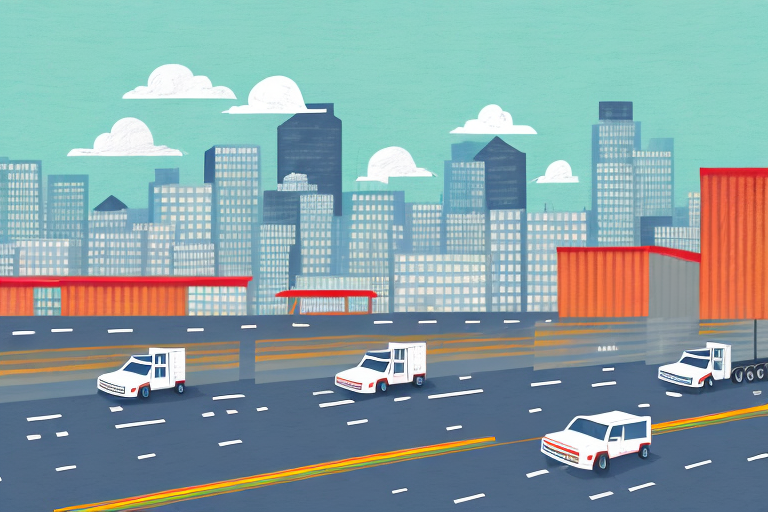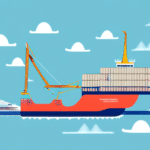Understanding the Role of Cartage in the Supply Chain
The supply chain is a complex network involving numerous steps, each presenting its own set of challenges and opportunities. One critical component in this chain is cartage, which plays a pivotal role in the efficient movement of goods from one point to another. Cartage refers to the transportation of freight within a local area, typically between a warehouse or distribution center and a customer's location. This article provides an in-depth analysis of cartage, exploring its history, significance in logistics management, service types, technological advancements, challenges, best practices, and future trends.
What is Cartage and How Does it Fit in the Supply Chain?
Cartage is a transportation service involving the movement of goods over short distances, usually within a local or regional area. It typically entails transporting merchandise from a distribution center to a customer's location or vice versa. Cartage is essential in the supply chain as it ensures timely and efficient product delivery. Without effective cartage, businesses may struggle to meet delivery deadlines, leading to lost sales and reduced customer satisfaction.
Cartage services are offered by various transportation companies, including:
- Trucking companies
- Courier services
- Local delivery companies
These providers often specialize in cartage, utilizing the necessary equipment and expertise to move goods swiftly and efficiently. Additionally, cartage services can be customized to meet specific business needs, such as same-day delivery or the transportation of hazardous materials. By collaborating with cartage providers, businesses can develop tailored transportation solutions that align with their unique requirements.
The History of Cartage and Its Evolution in the Modern Supply Chain
The practice of transporting goods locally has existed for centuries, initially using carts and wagons to move heavy items. With the advent of motorized vehicles like trucks, the efficiency and speed of cartage operations significantly improved. Today, cartage companies leverage advanced technologies such as GPS tracking, real-time analytics, and automated dispatch systems to optimize operations and ensure timely, cost-effective deliveries.
The rise of e-commerce and the demand for same-day or next-day delivery have further transformed cartage. Modern cartage companies have adapted by incorporating new delivery options, including:
- On-demand delivery
- Last-mile delivery
These innovations have made cartage an indispensable component of the contemporary supply chain, enhancing both the speed and convenience of product delivery.
The Importance of Cartage in Logistics Management
Logistics management encompasses all activities related to the movement of goods, including transportation, warehousing, inventory management, and order processing. Cartage is a crucial element of this process, enabling products to be transported swiftly and efficiently between different points in the supply chain. Collaborating with cartage companies allows logistics managers to:
- Ensure timely transportation of goods
- Minimize delays and reduce operational costs
- Enhance overall supply chain efficiency
One of the key advantages of cartage is its flexibility. Depending on the shipment's specific needs, cartage companies can utilize a variety of vehicles, such as trucks, vans, or even bicycles. This adaptability allows logistics managers to select the most suitable mode of transportation based on factors like distance, weight, and product fragility.
Moreover, cartage provides a high level of visibility and control over goods movement. Advanced tracking and monitoring systems enable logistics managers to stay informed about shipment statuses in real-time, allowing for prompt identification and resolution of any issues that may arise, such as delays or product damage.
Types of Cartage Services and How They Benefit Businesses
Cartage services come in various forms, each offering unique benefits to businesses:
- LTL (Less Than Truckload): Ideal for smaller shipments that do not require a full truckload.
- FTL (Full Truckload): Suitable for larger shipments that fill an entire truck.
- Expedited Shipping: Designed for urgent deliveries that need to be made quickly.
By selecting the appropriate cartage service, businesses can optimize costs and improve delivery times. For instance, LTL shipping allows multiple shipments to share a single truck, reducing transportation costs.
Another valuable cartage service is intermodal transportation, which utilizes multiple modes of transportation—such as trucks, trains, and ships—to move goods. This approach can be more cost-effective and environmentally friendly compared to relying solely on trucks. Additionally, intermodal transportation offers greater flexibility in delivery options and can help businesses reach more remote locations.
Partnering with a reliable and experienced logistics provider further enhances the benefits of cartage. A competent logistics provider can help businesses:
- Optimize their supply chain
- Reduce transportation costs
- Improve delivery times
- Leverage data analytics for informed decision-making
The Role of Technology in Streamlining Cartage Operations
Technology is integral to modern cartage operations, enhancing efficiency and streamlining processes. Key technological advancements include:
- GPS Tracking: Enables real-time location monitoring of shipments.
- Real-Time Analytics: Provides actionable insights for optimizing routes and improving delivery performance.
- Automated Dispatch Systems: Streamline the assignment of shipments to available drivers, enhancing operational efficiency.
By leveraging these technologies, cartage providers can:
- Optimize delivery routes
- Improve delivery times
- Reduce operational costs
Additionally, the exploration of autonomous vehicles presents a significant opportunity for the cartage industry. These vehicles can operate continuously without the need for breaks, follow programmed routes for maximum efficiency, and potentially revolutionize the industry by further reducing costs and improving delivery speeds.
Challenges Faced by Cartage Companies and How to Overcome Them
Cartage companies encounter several challenges, including:
- Rising fuel costs
- Increased competition
- Changing customer demands
- Driver shortages
To address these challenges, cartage companies should adopt a flexible and customer-focused approach. Key strategies include:
- Investing in fuel-efficient technologies and alternative energy sources to mitigate rising fuel costs.
- Enhancing service quality to stay competitive in a crowded market.
- Meeting evolving customer demands by offering diverse delivery options and improving service speed.
One of the most pressing challenges is the shortage of qualified drivers, driven by factors such as an aging workforce and increased demand for goods transportation. To overcome this, cartage companies can:
- Invest in comprehensive driver training programs.
- Offer competitive salaries and benefits to attract and retain talent.
- Partner with local schools and community organizations to promote careers in the transportation industry.
Best Practices for Choosing a Reliable Cartage Provider
Selecting the right cartage provider is crucial for businesses aiming to ensure timely and secure product delivery. When evaluating potential providers, businesses should consider the following factors:
- Experience and Reputation: Choose providers with a proven track record in cartage services.
- Reliability: Ensure the provider consistently meets delivery deadlines and maintains high service standards.
- Cost: Compare pricing structures to find a provider that offers competitive rates without compromising quality.
- Customer Service: Opt for providers that are responsive, communicative, and offer comprehensive tracking and monitoring services.
- Environmental Practices: Consider providers that implement eco-friendly practices and utilize sustainable technologies to reduce their carbon footprint.
Conduct thorough research by reviewing references, assessing provider contracts, and evaluating service offerings to make an informed decision. A reliable cartage provider not only ensures efficient transportation but also contributes to overall supply chain optimization.
Cost Optimization Strategies for Cartage Services in the Supply Chain
Effective cost optimization is vital for business success, and cartage services offer several strategies to achieve this:
- Consolidating Shipments: Combine multiple shipments to maximize truckload capacity and reduce transportation costs.
- Route Optimization: Utilize technology to plan the most efficient delivery routes, minimizing fuel consumption and travel time.
- Negotiating Favorable Contracts: Secure competitive rates through strategic negotiations with cartage providers.
- Just-In-Time (JIT) Delivery: Implement JIT systems to deliver goods only when needed, reducing inventory storage costs and optimizing transportation resources.
- Alternative Transportation Modes: Explore options like rail or water transport for long-distance shipments to achieve cost savings, especially for large or heavy consignments.
By adopting these strategies, businesses can significantly reduce cartage costs and enhance their overall supply chain efficiency.
Future Outlook: Trends and Innovations Reshaping the Cartage Industry
The cartage industry is experiencing transformative changes driven by technological advancements and evolving consumer behaviors. Key trends and innovations include:
- Autonomous Vehicles and Drones: Increasing use of autonomous delivery vehicles and drones to enhance delivery speed and reduce labor costs.
- Real-Time Tracking: Enhanced tracking technologies providing greater visibility and transparency in the delivery process.
- Sustainability Focus: Adoption of electric and hybrid vehicles, along with alternative fuels like hydrogen, to minimize environmental impact.
- Artificial Intelligence and Machine Learning: Leveraging AI and ML to optimize routes, predict demand, and improve operational efficiency.
- E-Commerce Growth: Continued expansion of e-commerce driving demand for flexible and rapid delivery solutions.
These innovations are setting new standards for efficiency, cost-effectiveness, and sustainability in the cartage industry. Companies that embrace these trends will be well-positioned to meet the future demands of the supply chain.
For more insights on cartage and logistics management, visit ShipScience.
Conclusion
Cartage serves as a vital link in the supply chain, enabling businesses to transport products swiftly and efficiently between various points. By understanding the essential role of cartage, along with the associated challenges and opportunities, businesses can make informed decisions regarding their logistics management. Selecting the right cartage provider, adopting cost optimization strategies, and leveraging technological advancements are key to enhancing supply chain performance. With the right approaches and best practices, businesses can optimize their cartage operations, reduce costs, and achieve significant improvements to their bottom line.






















